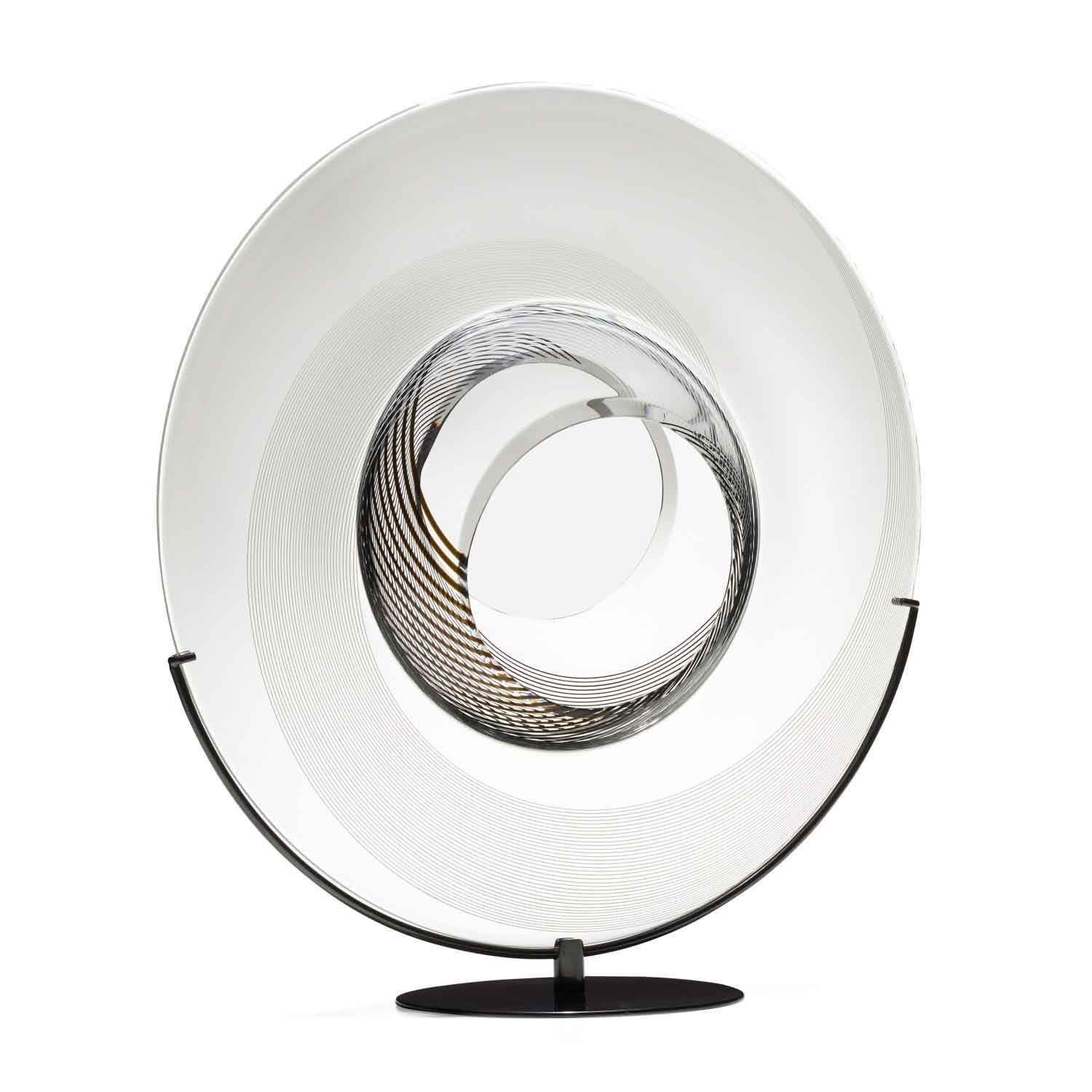Glass is transparent, relatively hard, inert from a chemical and biological standpoint, and has a very smooth surface. These characteristics make it a material used in many areas, but at the same time glass is a brittle material that tends to break into sharp fragments.
These disadvantages can be mitigated - in part or entirely - with the inclusion in the molten glass of other elements such as metal oxides, obtaining crystal. Both glass and crystal are obtained through a process of melting and cooling mixtures of silicates, including quartz and other substances such as boric oxide and phosphorus pentoxide, two vitrifying elements. The main difference between glass and crystal is the presence in the latter of metal oxides - usually lead - which causes a significant increase in density, refractive index, and hence the brilliance, approaching the optical properties of the crystal to those of the diamond. Crystal is a glass which possesses characteristics of gloss, transparency, elasticity; that’s where its name comes from: the greek κρύσταλλος, krystallos, means in fact ice.Furthermore, the metal oxide increases resistance of the material, allowing to manufacture objects thinner than those in glass.
A colorless glass of extreme purity, like rock crystal, was first obtained by Venetian glass masters starting from 1450 through the combination of quartz powder extracted from grinded pebbles of the Ticino river, with the ashes of marsh and marine plants of the Mediterranean basin, containing sodium carbonate and potassium.
Manganese dioxide was then added as bleaching. This substance was already known to the furnaces of Murano in 1290 but it took almost two centuries to refine a technique and a deeper understanding of its features and capabilities such as to enable the creation of a thin clear glass, free of impurities and bubbles.
Before that period, metal oxides, contained as impurities in the natural raw materials used, tinged glass in a shade variable from blue-green to yellow-green depending on the conditions during glass melting.
The birth of crystal dates back to 1450 circa, when Angelo Barovier invented the Muranese crystal, obtaining it from glass with the addition of sodium and manganese. A decree of the Venetian Republic in 1455 granted him the exclusive production of this very transparent glass, produced using the technique he developed. Barovier called this crystal " vetro cristallino " or " cristallo veneziano ”. This peculiar crystal is a clear and colorless glass, based on the purification of ashes obtained from plants containing sodium and potassium carbonate, as well as on the decolorization with manganese dioxide.
Angelo Barovier was able to get rid of impurities which made the glass opaque, slightly yellowish or greenish: the main ingredient was manganese dioxide included in the glass, added at the melting temperatures of the silica.
The Bohemian crystal is constituted by a component of calcium and potassium, and a low content of lead oxide.
The English crystal is a glass with potassium, and very bright because of the high concentrations of lead oxide. The discovery of English crystal is relatively new and is generally attributed to the Englishman George Ravenscroft that at the end of the 17th century is said to have Introduced lead oxide to the raw materials for glass. The result was a brilliant glass, as bright as rock crystal (quartz), with greater transparency, weight and sonority than other forms of glass, it was baptised lead crystal.
The Murano crystal contains sodium and manganese instead of lead. For this reason, unlike the Bohemian and English crystals that contain - in different doses - lead oxide, the muranese crystal requires a completely different processing in which glasss must be kept warm for decoration: the sodium, calcium, and manganese dioxide used make it more suitable for a long and complex manual processing.
Picasso gymnast, by Giuliano Mian
The lead crystal has excellent qualities but is hard in hot working and is more easily malleable when cold. On the contrary, Murano crystal is softer when hot and rigid whilst cold: the processing must be carried out when the glass is still hot.
From this peculiarity comes the magic of Murano crystal: processing takes more time, the shape can be changed at will, the possibility to include other elements such as colours, gold leaves, sbruffi (placing a number of coloured glass layers one on top of the other). While English and Bohemian crystals are recognizable by the geometric perfection of forms and the purity of glass, Murano crystal stands out because of the colour, the plasticity, its shapes: the artist's soul enters in the product.
Nowadays the industry of crystal is facing a new challenge due to a growing regulatory pressure tending to exclude lead from consumer products. This metal - although once solidified in glass does not pose a risk to the final consumer - can be harmful to workers and the environment. For this reason the manufacturers of glass containing lead oxide are under pressure to adopt an alternative. There are other metals that offer services similar to those of lead as titanium, zinc, or strontium oxides.




Hinterlasse einen Kommentar
Alle Kommentare werden vor der Veröffentlichung geprüft.
Diese Website ist durch hCaptcha geschützt und es gelten die allgemeinen Geschäftsbedingungen und Datenschutzbestimmungen von hCaptcha.